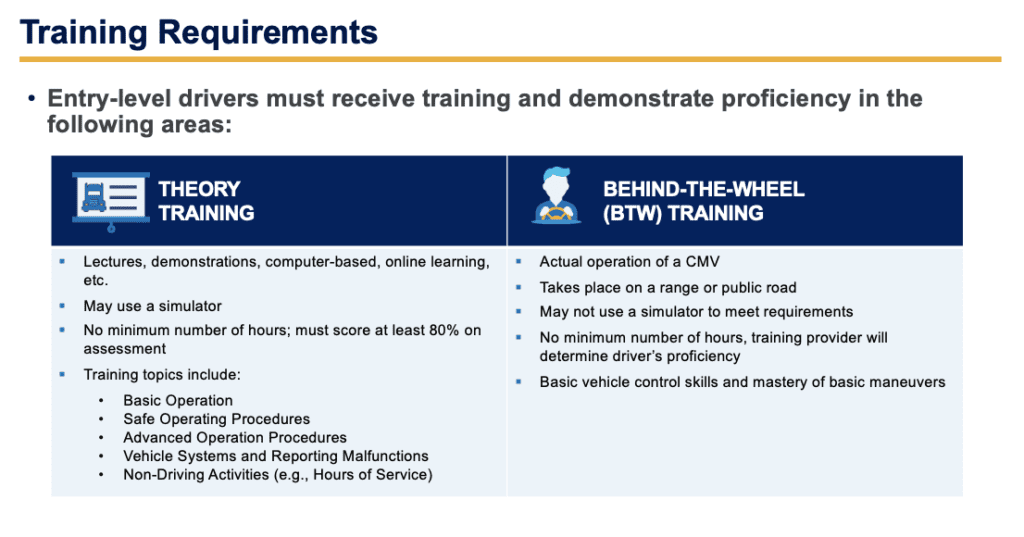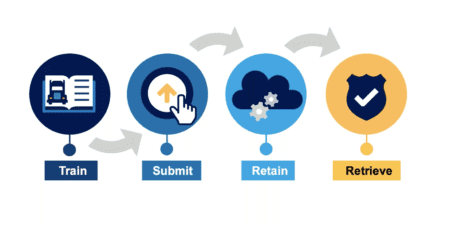Webinar Recap: Preparing for the Implementation of the ELDT Final Rule
After multiple failed attempts and many years of planning, the U.S. Department of Transportation’s Federal Motor Carrier Safety Administration’s (FMCSA) final Entry-level Driver Training (ELDT) rule will be implemented on February 7. So, as a driver or training provider, what must be done today to be prepared for the rule’s implementation?
To dive into the details, Kirk Sander, chief of staff and vice president of safety and standards for the National Waste & Recycling Association (NWRA), joined forces with Joshua Jones, transportation specialist, Commercial Driver’s License Division, FMCSA, and Richard Clemente, transportation specialist, FMCSA, to host a webinar focused on key provisions of the 2016 ELDT final rule and an overview of the ELDT Training Provider Registry (TPR).
The ELDT rule, which sets a federal standard for mandatory training of entry-level drivers and establishes minimum training requirements that entry-level drivers and training providers must meet, has been in the works since the mid-1980s. Since then, there have been several unsuccessful attempts to finalize the rule, which is ultimately a response to a Congressional mandate imposed under Section 32304 of the Moving Ahead for Progress in the 21st Century Act (MAP-21).
“We didn’t go through the normal rulemaking process [to get this rule finalized],” stated Clemente. “Instead of developing the rule in-house and putting it out for comment and publishing, we did what is called negotiated rulemaking. We had 26 different segments of the industry develop the framework of the rule, and we had six two-day sessions to develop the framework of the rule. Then, we developed a Notice of Proposed Rulemaking, put it out for notice and comment and finalized it on December 8, 2016. The original compliance date was February 7, 2020, but that got delayed [by two years] due to IT [information technology] implications and established the need for the Training Provider Registry, which is the IT system where the data will be housed.”
The new rule applies to both entry-level intrastate and interstate drivers and individuals who obtain a commercial learner’s permit (CLP) either on or after February 7, 2022. See the chart below for more information on who is covered under the rule.

Drivers who are covered under the rule must meet specific requirements and training outlined below before taking a commercial driver’s license (CDL) skills test or, if applying for the H endorsement, knowledge test.

The training is divided into two main buckets: theory training and behind-the-wheel (BTW) training. Both trainings may be delivered by different training providers; however, BTW range and BTW public road trainings must be provided by the same training provider.
Training providers can be training schools, educational institutions, rural electric cooperatives, motor carriers, state/local governments, school districts, joint-labor management, owner-operators and individuals. Training providers that have an interest in providing entry-level driver training must self-certify that they meet all FMCSA and state requirements that apply to curricula, facilities, instructors, state licensing and vehicles. It’s important to note that training providers with more than one location will have to individually register each location in the TPR.
Once added to the TPR, training providers will work with drivers to complete their required ELDT training. Once a driver has successfully completed training, the driver’s training provider will electronically upload the certification information in real-time to the registry by midnight of the second business day after the driver completes the training. Then, the state or skills examiner will retrieve the data prior to the driver taking a CDL skills test or knowledge test.
This process aims to improve roadway safety by ensuring entry-level drivers receive the proper training for the industries they are working in.
To listen to a recording of the webinar, click here. To learn more about ELDT and the Training Provider Registry, click here.



